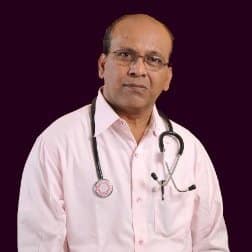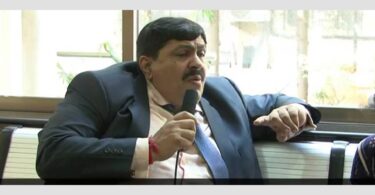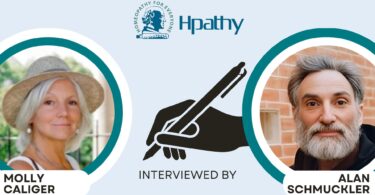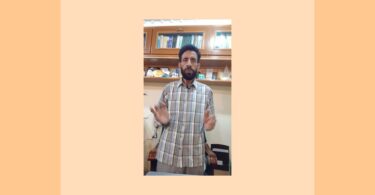Dr. Amarsinh D Nikam established the Aditya Homeopathic Hospital and Healing Centre in 1994 in Pune, India. It is full-fledged private hospital offering only homeopathic treatment. Today it is an 80-bed facility, with a waiting-list of patients seeking admission for treatment.
The Royal London Homeopathic Hospital (RLHH) was founded in 1849 by Dr. Frederick Foster Quin, the first homeopath in England, and a pupil of Dr Samuel Hahnemann. Sadly, a hundred and sixty one years later, in the year 2010 it closed down, or rather lost its unique identity as a “Homeopathic Hospital”. One reason cited for its sad demise was the fact that the last Director, the illustrious Dr. Anthony Campbell, was convinced that Homeopathy was “just another form of counselling” and was skeptical of all the “deluded claims” homeopaths made about the efficacy of Homeopathy [1]. The following interview will convince the reader that shortcomings in leadership and practical skills must have led to the demise of the RLHH, not the weakness of Homeopathy.
In stark contrast to this line of thinking, one Homeopath in India, Dr. Amarsinh D Nikam, had the gumption, or rather the audacity to put on stake all his earnings and reputation to start the first full-fledged private hospital offering only homeopathic treatment. The Aditya Homeopathic Hospital and Healing Centre was established in 1994 in Pune, India. Today it is an 80-bed facility, with a waiting-list of patients seeking admission for treatment. This interviewer wanted to find out what a “homeopathy only” hospital was, and sought to interview the founder, Dr. AD Nikam. Dr. Nikam was gracious enough to grant a two hour slot on a Sunday morning.
What followed was a very spirited discussion that was very illuminating. What made the interview so conversational and interesting was the fact that while both the interviewer and the interviewee are fluent in English, they are also native speakers of the Marathi language (which is their Mother tongue), and both love the poetic Urdu language, in which Dr. Nikam is wont to compose and recite couplets impromptu! Indeed, Dr. Nikam comes across as a man of many parts – doctor, entrepreneur, author, animal lover, teacher, social worker, film producer and most of all a compassionate human being.
AR: Dr. Nikam, I wish to thank you for granting me this interview on behalf of Hpathy.
Dr. ADN: It is my pleasure to welcome you to my Hospital and I shall be happy to answer your questions.
AR: Can you briefly tell us about the concept of a Homeopathic Hospital?
Dr. ADN: Well, you have many hospitals that boast of having Homeopathic consultants on their panel of consultants. These Homeopaths are doing an excellent job in helping patients with many chronic conditions. But they work during fixed hours. Once their clinic hours are over, they “pull their shutters down” and go home. From my early days as a student, I felt, Homeopathy should offer a full-fledged hospital that admits and treats patients by homeopathy alone, on a 24 X 7 X 365 basis, even in cases of emergency – just like any hospital.
AR: You mean to say that your hospital provides treatment to emergency cases as well? Can you give an example?
Dr. ADN: I am sure you understand there can be no greater medical emergency than a cardiac emergency, where every moment counts. Our hospital deals with every type of case, be it acute pericarditis, cardiac myopathy, endocarditis, myocardial infarction, acute renal failure, acute appendicitis – every conceivable condition that would require immediate medical attention and admission to a hospital. Also, we deal with Multiple Sclerosis, trigeminal neuralgia, psoriasis, brain tumors and many such conditions for which a patient may not find much help in a General Hospital or a Specialty Unit. Our hospital has an ambulance so that patients do not lose time reaching us. So far more than 3,000 critical cardiac cases have been successfully treated here. In my book Homeopathic Hospital? Yes! [2], I have presented typical cases that are admitted and treated at the hospital routinely. In all cases we have demonstrated the efficacy of homeopathy not only on the basis of a “feel good” sensation reported by the patient, but also with the support of diagnostic tests and clinical parameters.
AR: That is very interesting, because people never associate homeopathy with emergency care. So, do you mean to say you don’t use any injections, pain killers etc?
Dr. ADN: Absolutely. In our hospital we use no injections, intravenous saline transfusions and other things that people take for granted in a hospital ward. But that does not mean we are primitive. We take advantage of all state-of-the-art diagnostic tools to understand the pathology and progress of disease. We even monitor patients on CCTV to understand symptoms, modalities and peculiarities that may not be evident in a case-taking session.
AR: That is amazing! I would like to know how it all began. Tell us something about your childhood days and how you became a Homeopath.
Dr. ADN: Well, I come from a family of medical practitioners. My grandfather, Dr. Vitthal Nikam was an Ayurvedic physician and my father, Dr. Dattatraya Nikam was a Homeopath. When I was a young lad, I used to play with my friends barefoot, and we would stray into bushes and brambles while playing hide-and-seek. Very often our soles would bleed when thorns would pierce the soles of our feet. One day, a particularly sharp and big thorn pierced my foot and I was in deep pain. My friends carried me to my father’s clinic which was nearby. I was in terrible pain and I asked my father whether it would pain even more when he pulled the thorn out? I pleaded, “Wasn’t there a medicine that could push the thorn out automatically?” He just smiled and gave me some sugary pills and told me to go home. By the time I climbed down the stairs of the clinic, I realized the thorn was gone and so was the pain! That night I decided that I too wanted to be a doctor who would treat patients without pain or harm.
My father sent me to one of the best schools in Pune and then I went to study at the Medical College in Khamgaon where a renowned Homeopath, Dr. Kavishwar was the Principal. From my first day at college I wanted to establish my own hospital that would only treat patients with Homeopathy. Most people thought this was a crazy youngster’s fantasy.
After I graduated, I did my internship in a large General Hospital. My two year stint as a Resident Medical Officer taught me that I still had a long way to go before I could fulfill my dream. I had to gain tremendous experience and knowledge in disease and pathology, clinical procedures and above all understanding patients and their suffering. Besides, starting and running a hospital also entails management of resources, people, finances, and a host of other issues that go with any entrepreneurial venture.
AR: What did you do after completing your internship?
Dr. ADN: I worked in different parts of the State of Maharashtra; in small rural settings, in District level hospitals, and small-town clinics for the next 14 years. I worked with all types of people – villagers, tribal folk, factory-workers, and the rich and famous! But human suffering is the same regardless of your station in life. This exposed me to a lot of clinical experience and convinced me regarding the efficacy of Homeopathy – even in very severe pathological cases. After 14 years I returned to Pune and set up my practice there. At this point I felt confident to start my own hospital. I received a lot of encouragement from some prominent citizens, family members and well-wishers, so in 1994 I established the Aditya Homeopathic Hospital in Pimpri village, Pune. Today we have 80 beds and in a few weeks time we shall be shifting to our new premises nearby, where a new state-of-the-art facility will accommodate over 120 in-patients. I am assisted by a team of a dozen homeopathic doctors and many interns assist them.
Nowadays people are having a crisis of confidence with regard to the medical field. Modern medicine has earned a bad name because of the suffering and financial exploitation borne by patients. Homeopathy is more relevant today than ever before because it does no harm, it is a gentle way to cure, the cure goes to the root of the disease, and is very affordable. Patients admitted to the General Ward in our hospital pay just Rs. 300 per day (less than US$ 5/ GB£ 3), including the cost of medicines.
AR: What is the secret of your success? How is it that you have succeeded where others have failed?
ADN: (Laughs) – There is no secret. One needs to only follow the principles and philosophy taught by Hahnemann. Simple. It is one of the most precise and guaranteed paths to success. Isn’t it true that the principles taught in The Organon are as valid today as they were 250 years ago? Won’t the provings of our remedies give the same results today as they did over two centuries ago? Nowadays, every few years a new theory or explanation, or opinion comes up in modern medicine. Of course, we must learn more about the human body and disease. But that knowledge does not belong to allopaths alone. That is part of medical science and belongs to mankind.
A practicing homeopath must have full faith and trust in homeopathy. I call them the three “A”s, (in Marathi language) – and they roughly translate in English as Faith, Support and Reverence or Respect [3]. One must know and respect the limitations of each Healing Art. No Healing Art is complete and we must all learn from each other. You must be compassionate if you aspire to be a Healer and also have complete trust in the Creator and Sustainer. I never hide anything from anybody who wishes to know and learn about homeopathy. My students have access to all the case files and my notes on case papers, so they can see the mistakes I made and how the case progressed till it was treated. I have written many books which demonstrate my methodology. I tell you, it is quite simple and straightforward. (Laughs).
AR: So how would you sum up your methodology? Is it possible for other homeopaths to replicate your success?
Dr. ADN: As I said, you have to just follow the basic tenets of Homeopathy. We have to look at the totality. During case taking you must observe the patient closely, watch the expressions, his/her choice of words, and listen to their story. From this you must extract the Causations, Generals, Modalities (particularly Time modalities), Sensations, any Peculiarities and Uncommon symptoms with regard to the disease. Then pay attention to Thermals and Miasms. After all this is done, consider symptoms of the Mind.
AR: You mentioned Thermals and Miasms. You have written two books on the subject. Could you please elaborate on Thermals?
Dr. ADN: You see, my experience taught me that Thermals are very important while deciding on a remedy. How do I decide what are the thermal characteristics of a remedy? I did a lot of research on this matter by going through the outcomes in my cases. I categorized them as Hot, Chilly, Towards Hot, Towards Chilly and Ambivalent, based on rubrics that indicate thermal characteristics. If you see my book [4], I have given those rubrics on the basis of which remedy can be said to be any one of the five types. We cannot say blindly that a remedy is Hot or Chilly etc., we must see the symptoms in the patient and see if they are reflected in the remedy. In my book I have tabulated 284 remedies, and I use these guidelines in my day-to-day practice with great success. Thermal sensations of remedies are hidden in the modalities. They are related to the patient’s comfort or discomfort and are easy to elicit, and are related to their individual cellular metabolism, which is very characteristic of a person. Using this information as a filter helps tremendously.
AR: What about Miasms? There is a lot of discussion, theorizing and new perspectives on this topic. What is your take on this?
Dr. ADN: As I have said, one needs to just understand the basic principles laid down by Hahnemann. See, Homeopathy is not a logical science, it is a science purely based on understanding Dynamic Nature’s Law, and unbiased observation. People have a problem understanding the concept of Miasms because they have a poor grasp of pathophysiology and disease. That is why the student of homeopathy must study concepts of anatomy, physiology, and pathology; understand what basic diagnostic investigations can reveal about them and then try to understand which remedy will act. Today, thanks to the internet even our patients have a fairly good knowledge of pathology! Our job as homeopaths is to know which medicine has the simillimum for that state. The miasm is revealed by the progression of the diseased state and the pathology is a good guide. Hahnemann was trained as an allopathic doctor and even in his day he had a good understanding of disease, disease symptoms, and pathology. Every remedy has manifestations of all Miasms – Psora, Sycosis, Tubercular and Syphilis. It is not correct to categorize one remedy into just one Miasm. Similarly, every disease will progress through different miasmatic states. For example, skin afflictions or skin eruptions can be manifestations of progression through any one of the four Miasmatic expressions.
AR: Can you elaborate this with an example?
Dr. ADN: Take the remedy Carbo-veg. You can see abdominal distension which may be due to an indisposition (e.g., indiscretion in diet), or it could be due to obesity, or cirrhosis of the liver, or spleenomegaly – each represents a different miasmatic state and yet the same remedy may be the simillimum – if the totality of symptoms match the case. Each of these has causation factors. Indiscreet eating may be reflection of cravings, which could reveal more about the patient’s state. In my book on Miasms [5], I have prepared a table of more than a thousand common clinical conditions and shown how pathology and progression of disease state relates to the Miasms. Again, I have considered 284 remedies and the related clinical manifestations of the miasmatic state. Like the thermals, we can use this miasmatic detail to filter the remedies for differential analysis. In my experience, if the Miasm and the Thermals do not match, the remedy will not work. You cannot prescribe on pathology alone, but pathology is a good guide to the miasmatic state.
AR: What is your opinion about the new Miasms, Source and concepts that are being taught by many contemporary homeopaths?
Dr. ADN: As I mentioned earlier, I have found no necessity in my practice to look beyond the teachings of Hahnemann. Homeopathy is not based on conjecture, theory or logic. It is based on understanding the Dynamic Laws of Nature, on observations during provings and on experience in the clinic. The human mind constantly seeks patterns where none exist, whereas remedy proving and the experience in the clinic are unbiased observations. In our hospital we deal with every kind of disease, every stage and state of pathology, every kind of patient, rich and poor, male and female.
AR: Where can a student of homeopathy get this kind of information?
Dr. ADN: One must read Hahnemann’s The Chronic Diseases thoroughly to get a grasp on the concept of miasms. Further, Clarke’s Dictionary of Homeopathic Materia Medica and Hering’s Guiding Symptoms are excellent references to study symptoms with relationship to disease, drug and miasm. Clarke was a very good clinician who understood remedies and disease from a miasmatic point of view.
AR: During my tour of your hospital, one of your assistants mentioned that you use only one potency. Why is that? And which potency do you use?
Dr. ADN: After my experience over the years, I have found the thirtieth works best. I use only 30C. Most provings have been done in this potency and in my experience, it causes the least aggravation, and when we have to change to a remedy that follows well, the transition is very easy.
AR: Dr. Nikam, I would like to tell our readers that you have the distinction of producing the first full length feature film on Homeopathy. The film was produced in Marathi language. Could you tell me something about it?
Dr. ADN: The name of the film was Pratisaad, which translates as The Response, and was the first full length feature film to be made on Homeopathy [6]. The film was directed by Yogesh Gosavi. It had a powerful script and everyone’s contribution was remarkable. It won the coveted ‘Best Feature Film on a Social Issue’ Award at the Dadasaheb Phalke Film Festival 2010. Later that year it was selected as the official entry for a Marathi language film at the Toronto International Film Festival [7]. The movie is an autobiographical story of my life as a Homoeopathic physician and depicts the challenges I faced – from the media who ridicule Homeopathy, to relatives of patients who play into the hands of people who have a vested interest in tarnishing the image of Homeopathy. I am happy it had a successful run as I was able to carry the message of Homeopathy to the common man in simple language through an effective medium. I write articles in Marathi periodicals and appear on the television regularly to educate the general public about Homeopathy.
AR: Now I would like to know about your personal interests and pursuits. During this interview I heard you quote couplets of the great Urdu poet Ghalib (who was a contemporary of Hahnemann).
Dr. ADN: (Laughs) Yes, I love Ghalib – he was a gifted poet with a keen sense of observation of the human condition and suffering, and yet he retained his sense of humor! I also love compositions of Sant Tukaram and couplets of Saint Kabir. They convey the meaning of life, and what one should aspire for very succinctly.
AR: Dr. Nikam, thank you very much for sharing your time and your knowledge with us today. It was an honor and a pleasure to spend time conversing with you.
Dr. ADN: Thank you very much; it was pleasure meeting too. You are most welcome again.
[1] Lewis A: An Obituary: Royal London Homeopathic Hospital, 1849-2010. http://www.quackometer.net/blog/2010/09/an-obituary-royal-london-homeopathic-hospital-1849-2010.html
[2] Nikam, Dr. AD: Homeopathic Hospital? Yes!, Happy Publications, Pune July 2007
[3] The English translation is rendered from the Sanskrit words आस्था आधार आदर – āsthā ādhāra ādara
[4] Nikam, Dr. AD: Research in Thermal Materia Medica, Happy Publications, Pune July 2007
[5] Nikam, Dr. AD: The New Research in Manifestation of Miasm – In Disease, Medicine and Mind, Happy Publications, Pune July 2007
[6] Limaye V: A synoptic review appeared in Hpathy Journal in August 2010 https://hpathy.com/homeopathy-papers/pratisaad-%E2%80%93-the-first-movie-on-homeopathy/
[7]






A must read. A marvelous interview with an extraordinary man. I hope this inspires homeopaths to dream even bigger.
Really an energetic and encouraging interview to read.
I personally has attended the work shop for practitioners and experienced his efforts to spread the homoeopathy.
Dear Dr. AR. A golden interview. Sorry to say that Dr. Nikam had not elicited a case treated. Ambitions are arise in me to visit the hospital. His wordings, as ” But that knowledge does not belong to allopaths alone. That is part of medical science and belongs to mankind.One must know and respect the limitations of each Healing Art. No Healing Art is complete and we must all learn from each other “, are true of one.
Ganesan.m